Aesthetics

Aesthetics, originating from the Greek word aisthetikos, has multiple definitions. According to the Stanford Encyclopedia of Philosophy, “the term ‘aesthetic’ has come to be used to designate, among other things, a kind of object, a kind of judgment, a kind of attitude, a kind of experience, and a kind of value.” For one thing, aesthetics is a branch of philosophy dealing with matters of art, beauty, taste and perception. Aesthetics can also refer to a particular way of doing art, which may be analyzed as part ot a personal style, movement or time period.
1700’s saw many philosophers grappling with issues of aesthetics. According to Immanuel Kant an aesthetic judgement follows from one’s personal appreciaton of a work of art. In fact this intellectual appreciation is more important than merely visceral enjoyment. Thus for him, the work of art gains its aesthetic value from the spectator’s judgement of it. Kant’s writings on aesthetics have been highly influential in later aesthetic studies and art criticism.
Sean Cubitt puts an emphasis on temporality as key when defining an aesthetic, in his case the aesthetic of the digital. The formulation of aesthetics in a digital age needs to include not only the artwork and the audience, but also the present social context in which the two meet (Cubitt 2016, 275). This social is formed by “the cumulative alienation from land (the natural environment), machines (the technological environment), and information (the data environment)” (Cubitt 2016, 277). The temporal dimension is also visible in the ephemerality of digital art due to changes in technology (Cubitt 2016, 268).
References:
Cubitt, Sean 2016. Aesthetics of the Digital. Christiane, Paul (ed.) 2016. A Companion to Digital Art. Hoboken, NJ: John Wiley & Sons. 265-280.
Image credit: Anthea Simms
Tate Modern. https://www.tate.org.uk/art/art-terms/a/aesthetics
Tieteen termipankki. https://tieteentermipankki.fi/wiki/Estetiikka:esteettinen_arvostelma
The Stanford Dictionary of Philosophy. https://plato.stanford.edu/entries/aesthetic-concept/
Autonomy
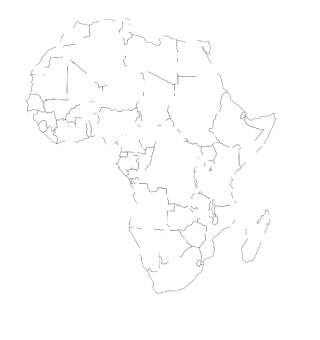
The Cambridge dictionary defines autonomy in a multiple different ways. First as “the right of an organization, country, or region to be independent and govern itself.” Second as “the ability to make your own decisions without being controlled by someone else. What we can take from these definitions is that autonomy can be considered as either something personal or collective. In the context of international relations, one could state that the concept of autonomy is linked more to the latter.
In political and legal context, autonomy refers to the power of social institutions to regulate their own affairs by enacting legal ruler (Cornell, 2002, 248). The concept of autonomy is relevant especially in the context of ethnic and minority groups. When reviewing Western academic work regarding the topic, a large part of it seems to include at least mentions in regards to the structural changes of post-soviet countries in Eastern Europe.
Autonomy in the IR context has a variety of dimensions depending on which IR theory we choose to implement and in what time frame. Before the cold war autonomy was not given a great deal of thought because it was associated with self-determination struggles; outside of a colonial context any self-determination discourse was viewed with suspicion by governments, since it was seen as a step onto “the slippery slope” that would inevitably lead to territorial or secessionist claims (Weller, 2005, 2). Wolf and Weller also describe how after the Cold War and the dissolution of Yugoslavia the conversation around autonomy evolved, and how it was then considered as a possible tool in accommodating separatist movements without endangering territorial integrities of existing states.
It could be stated that the definition and concept of autonomy has a significant role in how we study international relations and conflicts in general. It does not only describe the power of institutions regulating their affairs, but also in a broader sense depicts how the international system can be perceived as a constructed entirety of autonomous actors. The picture aims to depict the fragility of autonomy by showing a visual of Africa with broken borders.
References:
Cambridge Dictionary <https://dictionary.cambridge.org/>
Cornell, S. E. (2002). Autonomy as a Source of Conflict: Caucasian Conflicts in Theoretical Perspective. World Politics, 54(2), 245–276. https://doi.org/10.1353/wp.2002.0002
Image credit: Pixabay.com
Weller, M., & Wolff, S. (2005). Autonomy, Self Governance and Conflict Resolution: Innovative approaches to Institutional Design in Divided Societies (Vol. 33). Routledge. https://doi.org/10.4324/9780203461914
Autonomy

In addition to political and philosophical aspects, autonomy can be understood in a purely technical sense (Krishnan, 2009, 50). In technology and robotics autonomy are a desirable quality (Olivares-Alarcos et al., 2019, 5) and a concept that requires a definition for it to suit a more specific context.
Olivares-Alarcos et al. (2019) introduce a specific definition of autonomy in technology and robotics as “The extent to which a robot can sense its environment, plan based on that environment and act upon that environment which the intent of reaching some task-specific goal without external control”. The definition divides autonomy from the concept of automation since automated objects are not able to make decisions in diverse and changing conditions and they only do what they are told to do (Jones 2018). Autonomy in technology is also reflected in the relationship between technology and humans. It could be stated that autonomous objects do not have human control after being programmed and they are capable of carrying out a certain function on their own without the need of a human operator (Jones 2018; Krishnan, 2009, 50)
Regarding autonomy in technological issues, a crucial question is how autonomy can be calculated and what are the functional capabilities to achieve autonomy. Advancing beyond basic definition, technology offers different levels of autonomy depending on what capabilities and restrictions objects´ architectures demonstrate (Olivare-Alarcos, 2019, 5). The capabilities include decision-making and choice, recognition and categorization as well as remembering and learning, for instance. The capabilities form an entity that can calculate which level of autonomy is reached.
To operationalize and empirically observe different levels of autonomy, there are official forms of autonomy, such as supervised, pre-programmed and complete autonomy. With complete and full autonomy, there is no need for human input and it can not be reached without technology programming, designing and making themselves (Jones 2018). Making autonomy in technology an urgent issue, autonomous weapons and their development have become one of the most debated issues in military issues due to their potential to increase instability and escalation risk.
It is important to recognize that the concept of autonomy does not solely refer to political and philosophical issues, but also to technology which reflects comprehensively how humans interact and perceive issues developed by themselves. To conclude, the founding meaning of autonomy and the idea of the ability to make decisions without external control or restrictions can be interpreted in almost every field and issue, making the concept epistemological universal on how we interpret reality.
References:
Altmann, J & Sauer, F. (2017). Autonomous Weapons and Strategic Ability. Survival. 59:5, 117-142.
Image credit: www. etssoluton-asia.com
Jones. E. (2018). A Posthuman-Xenofeminist Analysis of the Discourse on Autonomous Weapons Systems and Other Killing Machines. Australian Feminist Law Journal. 44:1, 93-118
Krishnan, A. (2009). Killer Robots : Legality and Ethicality of Autonomous Weapons: Taylor & Francis Group.
Olivares-Alarcos, A et al. (2019). A review and comparison of ontology-based approaches to robot autonomy. The Knowledge Engineering Review, 34;29, 1-34.
Change
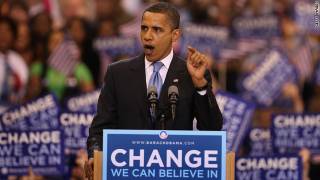
“Change will not come if we wait for some other person or if we wait for some other time. We´re the ones we´ve been waiting for. We are the change that we seek”, said Obama during his campaign speech held in Chicago in 2008. The quote entails that “change” is inevitable and required character of action, but the contents below the concept of change remain unknown. Universally, it is recognized that change is present everywhere in our lives but it emerges without us knowing the specific meaning of it. According to the Cambridge dictionary, change is “the act of becoming different or the result of something becoming different”. This indicates that change is generally seen as a process where the object becomes something it has not been before.
Common approaches to change can be based on a metaphor of growth which can be observed empirically through statistics, for example (Berraine et al., 2021, 7). Also, Berraine et al indicate that change is also linked to concepts with the suffix “ation”, such as digitalization and more generally to periodization in which assessments of change are based on extrapolation from observations made at two different points in time (Berraine et al., 2021, 10). Change is never uniform or totalizing but is experienced through the articulation of past and present conditions and future expectations (Berraine et al., 2021, 14). Greek philosopher Aristoteles stated that to understand change in the world, we need to understand that causes affect objects to change (Insert Philosophy Here). The causes create frameworks such as growth and digitalization, which in turn act as reflections of change.
In politics, change can be divided into quantitative and qualitative change. Linking to Obama´s speech, the concept of change is also a central tool for politicians to give a promise from a positive transformation conducted by them. Also, in international relations, it is argued between idealists and realists on whether humans can change reality or not.
To conclude, it is shown that change is a central concept when we think about ourselves and the world around us. Despite we recognize when change is happening, it is also crucial to see the change as discourses behind the concept itself.
References:
Barack Obama´s Feb. 5 Speech. New York Times. < https://www.nytimes.com/2008/02/05/us/politics/05text-obama.html>
dir=”ltr” style=”text-align:left;”>Berraine, Y, Derks, A, Kreil, A, Lüddeckens, D. (2021). Making Sense of Change: Methodological Approaches to Societies in Transformation An Introduction. In Methodological Approaches to Societies in Transformation: How to Make Sense of Change.
Cambridge Dictionary <https://dictionary.cambridge.org/>
dir=”ltr” style=”text-align:left;”>
Giles, D. Aristotle´s Theory of Change. Insert Philosophy Here. < https://insertphilosophyhere.com/aristotles-theory-of-change/>
dir=”ltr”>Haukkala, H. (2014). Maailmanpolitiikan Muutos: Suunta, Syyt ja Seuraukset. In Politiikan Muutos. Forsberg, T & Raunio, T: Vastapaino, 229 – 259.
Image credits: https://caffertyfile.blogs.cnn.com
Cyberspace
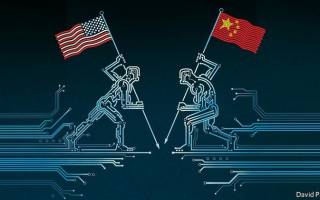
When thinking about the definition of “cyberspace”, one tends to think about the internet. But what is the difference between internet and cyberspace? The terms are sometimes used interchangeably, but there is a slight difference. Basically, internet consists of connected networks and servers, and cyberspace is what is created by this. (Cyber Security Intelligence 2017) Whereas conventional physical spaces are bound by laws of nature, cyberspace is bound by the code it’s made of (Brantly 2016). Users access the internet and navigate and create content on the cyberspace. Cyberspace is a digital environment that encompasses social, political, and economic aspects and activities. (Deibert & Crete-Nishihata 2012)
According to Aaron F. Brantly (2016) cyberspace is the most governed ungoverned space in existence. Cyberspace governance is divided, shared, contested space with overlapping geographic, legal, and technical boundaries. Beyond technical issues, national governments create laws that deal with data privacy, registration of users, filtration of content and surveillance of individuals. The most prominent example of these are China and North-Korea, who both deny access from their citizens to certain parts of the internet, so they cannot access cyberspace freely.
States have also created international governing attempts; treaties, agreements and working groups. The target of these is to tackle transnational criminal behavior in cyberspace. States can also have bilateral talks and informal commitments to normative behaviors in cyberspace like the US and China have done. (Brantly 2016)
References:
Brantly, A. F. (2016). The most governed ungoverned space: Legal and policy constraints on military operations in cyberspace. The SAIS Review of International Affairs, 36(2), 29-39.
Cyber Security Intelligence (2017), The Difference Between Cyberspace & The Internet. Blogpost. Accessed: 10.11.2021, Available: https://www.cybersecurityintelligence.com/blog/the-difference-between-cyberspace-and-the-internet-2412.html
Deibert, R. J., & Crete-Nishihata, M. (2012). Global governance and the spread of cyberspace controls. Global Governance, 18(3), 339-361.
Image credit: David Parkins. https://eaworldview.com/2020/05/cyber-battle-us-china-russia/
Digital disruption
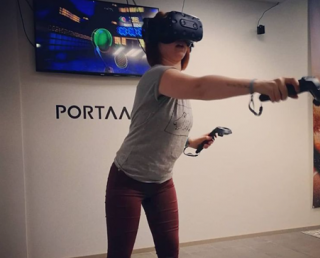
“Digital disruption is an effect that changes the fundamental expectations and behaviors in a culture, market, industry, or process that is caused by, or expressed through, digital capabilities, channels or assets.” [i]
The World Economic Forum (WEF) is estimating that directly through improvements in digital capabilities (digital infrastructure, applications) the five key global industries (e-commerce, automotive, logistics, electricity, media and entertainment) will increase more than 10 trillion US dollars in value over the next decade. [ii] Digital disruption is related to what some call “fourth industrial revolution”, which builds on digitalization but takes it one step further with (industrial) Internet of Things (IoT), cyber physical systems, artificial intelligence (AI) and virtual and augmented realities (VR and AR). Digitally developed societies are and will be changing dramatically as a result of this ongoing process.
Digital disruption is already happening all around us, and the pandemic has accelerated this progress. Due to digitalized services, you don’t need to leave from your home to get groceries, and you can study whole semesters from the comfort of your own home. Surveillance capitalism has transformed us and our needs and interests to a commodity that big tech companies like Facebook or Google can monetize [iii] , all the while creating polarization and information bubbles [iv]. What is yet to be seen is how AI, VR, AR, and IoT will change our lives in the future.
So, is digital disruption a good or bad thing? On the other hand, it has changed the way we live our daily lives; we can control all the lights in our home with simple voice commands, doublecheck the content of our fridge with internal cameras while at the store or use virtual reality to visit museums across the world. On the other hand, political polarization has increased, creating fertile ground for populism and even extremism and terrorism. Completely new type of wars can be fought in cyber space, and we are much more reliant on these cyber physical spaces and systems when (industrial) IoT will become more common in our societies and homes, and a successful attack on those could really shock our digitally dependent societies.
“Technology is giving life the power to flourish like never before or to self-destruct.” A quote from Max Tegmark [v].
References:
[i] Gartner (2021). Digital Disruption. Gartner Glossary. Available: <https://www.gartner.com/en/information-technology/glossary/digital-disruption>, accessed 27.10.2021
Image credit: Nina Hokkala
[ii] Vagadia, Bharat (2020). Digital Disruption: Implications and Opportunities for Economies, Society, Policy Makers and Business Leaders. Springer International Publishing AG. Page 4
[iii] The New York Times (2018). Cambridge Analytica and Facebook: The Scandal and the Fallout So Far. Available: <https://www.nytimes.com/2018/04/04/us/politics/cambridge-analytica-scandal-fallout.html>, accessed 27.10.2021
[iv] Bleiberg, Joshua & West, Darrell M (2015). Political polarization on Facebook. Brookings. Available: <https://www.brookings.edu/blog/techtank/2015/05/13/political-polarization-on-facebook/>, accessed 27.10.2021
[v] Vagadia, Bharat (2020). Digital Disruption: Implications and Opportunities for Economies, Society, Policy Makers and Business Leaders. Springer International Publishing AG. Page 2.
Disruption

Disruption is an action or event which prevents or interrupts normal human behaviour in some way, the scale varying from everyday life to national or international level, as defined by the Cambridge English Dictionary. Disruption can appear in their most severe forms as societal and governmental changes, such as coups, revolts or political scandals, or environmentally in the form of natural disasters or famines. Disruptions however are not always spectacular and massive events, for many disruptions can go unnoticed beyond their initial discovery and recovery. When they do affect the entire collective, be it national, municipal or village level, the community members will develop an experience of the disruptive event, which can lead to for example traumas (Vollmer, 2013, 1-5).
Disruptions can be force for change and innovation as well. In the field of industry, disruption can be perceived as a change in the established structures, and thus can lead to the prominent actors in the field to respond with fundamental changes to their production and operations. Similarly the disruption can allow new actors to enter the field( Sanders, Skog and Wimelius, 2018, 1-3). In societal disruptions, the response for disruptions may lead to greater progress or stagnation. Responses to disruptions have also changed with age, with scientists gradually replacing religious figures, politicians and journalists as the main source for disruption response and expertise. Thus with disruptions, a large-scale change from fear- and expectation-based responses into fact-based responses has occurred during the entry into modern era (Vollmer, 2013, 6-9).
Disruptions thus play a large role in the society, even if only a minority of them evolve into large-scale catastrophes and disasters. They can be a force for destruction and suffering, or a platform for societal improvement and evolution. Responses to disruptions vary to this day, as evident by the COVID-19 pandemic for example, but a large shift into more fact-based responses is evident.
References:
Cambridge Dictionary https://dictionary.cambridge.org
dir=”ltr”>Image credit: https://fi.depositphotos.com/133296534/stock-photo-label-released-from-the-cubes.html
dir=”ltr”>Sanders, Johan, Skog, Daniel, & Wimelius, (2018), Digital Disruption. Business & Information Systems Engineering, Volume 60 Issue 5.
Vollmer, Hendrik (2013), The Sociology of Disruption, Disaster and Social Change: Punctuated Cooperation. 1-9. Cambridge University Press.
Division

Division comes from the old Latin word of divisionem, and its meaning is defined as separation of something into parts or groups, or one of the parts or groups that has been separated according to Cambridge English Dictionary. Division can also mean an unit of organization. In society, division can appear on multiple levels, be their related to ethnic, economic or other status differences. Divisions have existed in societies since the emergence of human communities, and have taken a myriad of forms, not inherently always in a negative way. However, division in social sense has taken a more negative connotation due to large and internationally condemed segregation systems, such as the South African apartheid. Division is often perceived in a mentality of “us” versus them, where the opposing groups are viewed as inherently the other, different from the group that consists “us” for the person. This can in practice mean distrust or hatred of the elites, ethnic groups or political entities (Itten, 2019, 3-6). This mentality can lead to increased polarization and disconnect between groups, which can in turn lead to violence, social unrest and further fracturing of the society (Itten, 2019, 8-13).
Western liberal democracies in most cases follow the recognition of equal rights for their citizens, and throughout the 20th and 21st century there has been a long-term move towards lessening the effects of society division, such as right of sexual minorities, improving the position of ethnic groupd and bridging the inequality of economic resources between men and women (Browne, 2006, 1-6). However, this has not mean the complete elimination of divisions within societies, as evident by large protests such as the recent Black Lives Matter movement or the continued labor and wealth gap between men and women (Brändle, Galpin & Trenz, 2021). In their worst form, divisions can manifest in verbal and physical assaults, threats and harassment, and in surveys conducted by European Union’s Agency of Fundamental Rights in the early 2010s suggested that a large portion of ethnic and sexual minorities still suffered from such attacks (Itten, 2019, 13-14). Large societal changes or events can also affect divisions and interactions between groups, either lessening the divide or further polarizing it. Divisions can however be mended and depolarized by mediation processes, civic fusions (differing ideological groups discussing difficult subjects to find some common ground) and mediative decision making (Itten, 2019, 16-19).
Divisions are a large part of even the current society, and this most likely will remain the case as politics have become increasingly polarized, as evident by the rise of populism for example. Divisions can be a barrier between social development and problem solving, and can thus lead fragmentation and distrust in societies. But this is not a completely unavoidable conclusion to division, and measures can be taken in communities and societies to combat the issue.
References:
Browne, Jude (2006), Sex Segregation and Inequality in the Modern Labour Market. Policy Press.
Brändle, Verena K., Galpin, Charlotte & Trenz, Hans-Jörg (2021) Brexit as ‘politics of division’: social media campaigning after the referendum, Social Movement Studies, DOI: 10.1080/14742837.2021.1928484
Cambridge Dictionary https://dictionary.cambridge.org
dir=”ltr”>Image credit: Rolls Press/Popperfoto/Getty Images
Itten, Anton Valerian (2019),Overcoming Social Division : Conflict Resolution in Times of Polarization and Democratic Disconnection. Routledge.
Online Etymology Dictionary https://www.etymonline.com
Emancipation
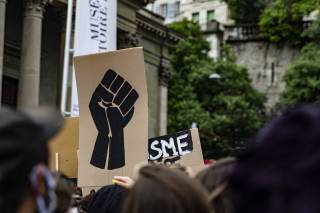
In the most general sense, the concept of emancipation refers to an entity’s liberation from control, dependence, restraint, confinement, restriction, repression, slavery, or domination (Susen 2015, 1024). The term has its etymological origin in the Latin word “emancipare”, which literally means “to take from the hand”. Thus, the English verb “to emancipate” is used to capture the idea of “freeing or releasing something or somebody from dependence upon something or somebody else”. (Ibid.) Its meaning is captured in the 1863 Emancipation Proclamation signed by then-President Abraham Lincoln in the midst of the Civil War: “All persons held as slaves are, and henceforward shall be free” (in Finley 2014).
One context for the concept can be tracked down to developments of breaking free from colonial cultures, in which colonisers had assumed power and superiority over subordinated subjects, the colonised (Hall, Draper, & McClelland 2014, 1). In this respect, the colonised are protagonists of emancipation, active subjects liberating themselves from disempowering forms of control. This is reflected in modern English, in which the term “emancipation” commonly describes the transition from heteronomy to autonomy, from dependence to freedom, or from alienation to self-realization (Susen 2015, 1024). In this sense, colonisation is seen as an arbitrary and illegitimate exercise of power that creates disempowering experiences, such as repression, domination, and alienation.
The concept of emancipation is used in different contexts and given multiple different meanings that are not fixed. What brings all the meanings together, however, is the underpinning universality of the ideas of emancipation. History shows us, how individual or collective actions oriented toward liberation from repressive powers have always been a major impulse of social and political change all over the world. What is noteworthy is how these liberatory actions to overcome modern-day racism and repression have a visual side: symbolic possession of the past can be seen as a strategy aimed at emancipation (Finley 2014). For example, black artists use memory as an aesthetic tool to emphasize recurrent themes that have shaped the African American experience, notably the meaning of slavery and promise of emancipation (Ibid.). As in contemporary political theory it is generally accepted that modern discourses of emancipation cannot be separated from the emergence of social movements (Susen 2015, 1033), the focus shifts to movements like Black Lives Matter and the often visual means to achieve their emancipatory objectives.
References:
Finley, C. (2014). “Visual legacies of slavery and emancipation”. Callaloo, 37(4), 1023–1032.
Image credit: http://www.industriall-union.org/feature-black-lives-matter-on-our-streets-in-our-workplaces-in-our-unions
xml:lang=”fi-fi” lang=”fi-fi”>McClelland, K., Draper, N., & Hall, C. (2017). Emancipation and the remaking of the British Imperial world. Baltimore, Maryland: Project Muse.
Susen, S. (2015). Emancipation. In Gibbons, M. T., Coole, D., Ellis, E. and Ferguson, K. (eds.), The Encyclopedia of Political Thought, pp. 1024-1038. Chichester, UK: Wiley Blackwell.
Hacktivism

As the world is becoming more and more dependent on digital tools and cyberspace, one must know how to use these technologies effectively and appropriately in order to provoke conversation and political change. As the name suggests, hacktivism is a form of civil disobedience which “generally involves both computer technology and political activism” (Tatar & Celik 2015, 55). The term can have several interpretations depending on if it’s considered hostile activity against civilized society or an attempt to raise awareness and protect human rights and freedom of speech. A well-known example of a hacktivist group is the Anonymous.
Regardless of the same operational environment, a distinction between digital activism and hacktivism needs to be made. Digital activism can include for example mobilization, organization, and persuasion (Agur & Frisch 2019, 4). It’s legal, non-hacking related activity that pursues to get people to participate on evoking political change through different digital technologies, such as social media. This is especially effective in countries that execute strict censorship and/or have limited freedom of speech. Hacktivism on the other hand can consist of illegal intrusions or disruptive commissions that aim to damage for example governmental authorities – therefore, it is a more direct and somewhat malicious activity towards certain political actors. However, hacktivism needs to be separated from cyberterrorism, since hacktivists seek to be heard and seen and are not motivated to cause societal mayhem, but societal change instead. (Tatar & Celik 2015, 55.)
At the end of the day, hacktivists aim to emphasize what they see as injustice and protect equal peace and security per se – not threaten it. The problem here is, of course, that the ethics of hacktivism can be dubious at times: the question of good and bad is open to individual and cultural interpretations.
References:
Agur, Colin & Frisch, Nicholas (2019), Digital Disobedience and the Limits of Persuasion: Social Media
Activism in Hong Kong’s 2014 Umbrella Movement. Social media + society. 5(1), 1–12.
Image credit: Wallup.net
Tatar, Ünal & Celik, M. Minhac (2015), Hacktivism as an emerging cyber threat: Case study of a Turkish hacktivist group. In Jarvis, Lee, MacDonald, Stuart & Chen, Thomas M. (Eds.) Terrorism Online: Politics, Law and Technology. 54–71. Taylor and Francis.
Peace
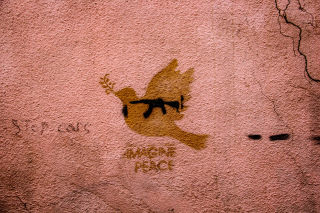
Generally, peace “tends to be defined in the negative as the absence of its opposites, namely war and violence” (Vuori et al. 2019, 56), or as something “not as the absence of conflict, but as the absence of violence” (Hsiao & Le Billon 2021, 11). In this context, peace is the outer aspects which states, nations and individuals manage in order to maintain order and peaceful connections among themselves and others. Different organizations, such as the United Nations, aim to maintain international peace and security. Opposed to “outer” peace, “inner” peace refers to a state in oneself that through an abundance of practices culminates to the feeling of psychological calmness that can be maintained by a relatively healthy lifestyle.
As can be seen in the definitions mentioned earlier, the absence of violence in peace is a somewhat universally accepted way to describe peace, but in terms of conflict and violence the definitions vary from one another. As Vuori et al (2019, 55 & 56) mention, the norms and signs set for peace were established in conflicts and thus are usually recognizable internationally. They can also be understood outside the limits of conflict, and these signs include for example the white flag, poppies, the symbol for peace and the V-sign made with your index and middle fingers. In more theoretical terms, Johan Galtung separates the concept of peace into negative and positive peace; negative peace being the absence of the state of war, direct physical violence or indirect structural violence, and positive peace the absence of structural causes ‒ structural and cultural violence ‒ that may lead to a war (Hsiao & Le Billon 2021, 11).
All examples mentioned show that peace is a state in which a certain entity, a person or a state for example, is and how it needs maintaining and conscious work in order to be able to benefit the entity it serves. It has both individual and collective aspect and both of those aspects need to be considered when talking about peace.
References:
Hsiao, E. (Lan Yin), Le Billon, P. 2021. Connecting Peaces: TBCAs and the Integration of International, Social, and Ecological Peace. International Journal on World Peace. Vol. 38 Issue 1, pp. 7-40.
Image credit: Zaur Ibrahimov on Unsplash
Vuori, J., Guillaume, X. & Saugmann, R. 2019. Making peace visible. Colors in Visual Peace Research. In Spencer et al. (ed.) special issue on Visual Peace. Peace & Change. DOI: 10.1111/pech.12387
Realism

The Stanford Encyclopedia of Philosophy presents two claims as central properties of realism: one is a claim about the existence of objects and their various properties, and the other claim is about independence of these objects and their properties, meaning that their existence does not depend on anything other than their existence itself: “The realist wishes to claim that apart from the mundane sort of empirical dependence of objects and their properties familiar to us from everyday life, there is no further (philosophically interesting) sense in which everyday objects and their properties can be said to be dependent on anyone’s linguistic practices, conceptual schemes, or whatever.”
Realism in art refers to either the general ideal of striving for the highest level of accuracy in depicting the existing world, often requiring a high level of skill and detail, or, more specifically to the 1800’s movement of naturalist painting, whose most famous artist may be the French painter Gustave Courbet. Many of Courbet’s works were considered controversial for their realistic depictions of bodies, workers and environments rarely seen in high art.
In international relations realism has yet a different meaning. Political realism, makes various assumptions about the workings of international politics, including the three core assumptions laid out by Legro and Moravcsik (12-18, 1999). The first realist assumption is that the international community consists of rational conflict groups looking out for their own interests within a system that is anarchic, or lacking an upper legal structure. The second realist assumption is that the interests of these groups are fixed and by their nature conflictual. “Interstate politics is thus a perpetual interstate bargaining game over the distribution and redistribution of scarce resources”, write Legro and Moravcsik (13, 1999). The third realist assumption is that the states have the ability to coerce and bribe each other. Political realism, most popular during the Cold War, paints a rather gloomy picture of international politics.
Security
The word ‘security’ originates from the Latin words ‘securitas’ and ‘securus’, which mean ‘condition of being secure’ and ‘free from care’ (Online Etymology Dictionary). On one hand, it is about freedom from physical danger and risk, but on the other hand also about freedom from mental factors such as care, doubt and anxiety. The word has gone beyond its traditional association with a state and military and started to include an ever- broadening range of issues from environmental degradation to cyberspace. Ole Waever (1995, 7) defines the concept in a following way: ’Security signifies a situation marked by the presence of a security problem and some measure taken in response.’ Insecurity, on the other hand, is a ’situation with a security problem and no response’ (Ibid.). Thus, security is always relative and claiming the term, ’speaking security’, focuses our attention to the questions of whose security is at stake; who are conceived as key agents of security (who is responsible for/able to respond to the threat?); how is the nature of the threat defined; and what responses are suggested for dealing with that threat (McDonald 2013, 42). The answers to these questions have expanded from the ones offered by the traditional understandings of security, in which rational choice and game theories lead to a presumption about a state-centric, military- and defence-focused world of materialistic factors.
Taking ideational factors into account and understanding reality, and hence security, as sosially constructed as well as shifting the focus from the state to the micro-level of the individual or to the macro-level of the global collectivity have transformed Security Studies. The widening agenda is the result of an ever more complex, networked and fast-paced world with obscure phenomena such as climate change, financial crises and terrorism. In addition, new media technologies impact our subjective feeling of security: they often visualize insecurity as this is what gains most attention. In the expanded field of Security Studies this visuality has been paid attention to as an important aspect for security. Hansen (2006, 53) notes how images can be performative and have political implications.
However, for most of us security is in the details of our concrete every-day-lives; it’s about family ties, social interconnectedness and social capital, perceived health, aspirations and engagement, all under the umbrella term of well-being (Webb & Herrera 2012, 2). The question whether there is security does not answer the separate one whether you feel secure. Does the ever developing surveillance technology, at least ostensibly aiming at securing the society make you actually feel secure? Security always includes particular meanings and practices that are constructed in relations of power.
References:
Online Etymology Dictionary, available at <https://www.etymonline.com/word/security>, last read 2.11.2021.
Waever, O. (1995). Securitization and Desecuritization, available at, < https://dl1.cuni.cz/pluginfile.php/872615/mod_resource/content/1/Waever.pdf>, last read 10.11.2021.
Webb, D., & Wills-Herrera, E. (2012). Subjective Well-Being and Security (1. Aufl., Vol. 46). Dordrecht: Springer Netherlands.
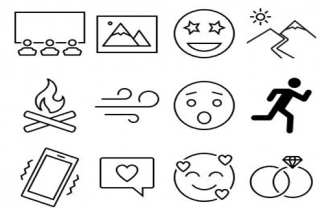
Semiotics is a study of “how meaning is made through the use of signs” (Vivanco 2018). It explains how humans understand different signs in a specific way depending on their age or cultural background. Emojis are a good example of how signs can communicate emotions: for example, sending a text message with a smiley face tells the recipient that the sender is feeling content.Semiotics can be viewed from two different theoretical approaches depending on which theorist one decides to follow: the Swiss linguist Ferdinand de Saussure or the American philosopher Charles Sanders Peirce. Saussure’s definition of sign contains a signifier (the acoustic image) and a signified (the concept related to the signifier). Neither of these can be a sign by themselves; it is the structural relationship of the two that creates a sign. (Stout 1993, 185.) For example, a book (the concrete object) doesn’t have a meaning in itself without the concept of a book.
Peirce on the other hand, adds a third element to the definition of a sign: it constitutes of a sign (an actual thing), its object (the thing that it refers to) and its interpretant (the meaning that is produced). Furthermore, he classifies signs based on their primary qualities as signs (icon), their relationship to their object (index) or their relationship to their interpretant (symbol). (Stout 1993, 186.) An icon would be a picture of a horse: it represents the external qualities of said animal. An index would be the connection of fire and smoke: the smell of smoke indicates a fire nearby. A symbol would be a heart emoji: it can only be understood if one associates it with love and affection.
When studying digital visuality in peace and security, semiotics helps to understand how different signs can play a part in peace-building processes. For example a white flag is a well-known symbol for surrender. The flag itself (signifier) doesn’t mean anything, yet it communicates peace through cultural understanding of color white as a sign of purity and serenity, and through its historic use for signaling ceasefire in conflict zones (Vuori, Guillaume & Andersen 2020, 68), both of which are then signifieds in this scenario.
References:
Image credit: Sara Pynttäri
Stout, John (1993), Semiotics. In Makaryk, Irena (Eds.) Encyclopedia of Contemporary Literary Theory: Approaches, Scholars, Terms. (pp. 183–189). Toronto: University of Toronto Press.
Vivanco, Luis (2018), A Dictionary of Cultural Anthropology. Available <https://www-oxfordreference-com.libproxy.tuni.fi/view/10.1093/acref/9780191836688.001.0001/acref-9780191836688>, read 13.10.2021.
Vuori, Juha, Guillaume, Xavier & Andersen, Rune (2020), Making Peace Visible: Colors in Visual Peace Research. Peace and Change. 45(1), 55–77.
Sensor

The Cambridge Dictionary defines sensor as “a device that is used to record that something is present or that there are changes in something” and “ a device that discovers and reacts to changes in such things as movement, heat and light” (Cambridge dictionary 2021, sensor entry). It is a detector that is used with other electronics and is therefore, collecting data and sending information of its environment’s altered events to other devices. Sensors come in a wide range, and they vary from the traditional ones (such as pressure or temperature sensors) to more modern ones such as tactile sensors that are activated by touch and visual sensors which capture at least a two-dimensional image of the object being surveyed (Werth Inc.).
Due to improved and advanced technology different sensors are being used to detect issues and changes of events around us that the human eye no longer could have measured due to its limited sources, for example sensitivity to light and warm-bloodedness. Sensors can be found in every aspect of human life: everyday life, art, politics and so on, to all of which they offer an abundance of possibilities and threats. To give a couple of examples, sensors in activity wristbands measure pulse, calories and steps among other things, and are usually in the eye of critique just for their lack of accuracy. Visual sensors used for data gathering both collect important information of the object(s) being surveyed and create a massive security hazard at times, as is demonstrated by Saugmann et al. (2020, p. 2004) with Richard Mosse’s Heat Maps. Mosse documented refugee camps with a camera that can detect body heat from a great distance and this allowed people in a vulnerable position to be photographed without their permission. The security hazards also deal with people and private companies that can afford and have the means to control the outcome of the detected changes based on the data that the sensor collected, making security a product of a private good (Rothe 2017, p. 350).
With sensors detecting the alteration around them we are able to get valuable data of the changes of our bodies, environments and greater entities. This enables further research to take place in those areas and opens doors for matters and issues that would otherwise be left unnoticed.
References:
Cambridge dictionary
Image credit: Ella Eskelinen
Rothe D. Seeing like a satellite: Remote sensing and the ontological politics of environmental security. Security Dialogue. 2017;48(4):334-353. doi:10.1177/0967010617709399
Saugmann, R., Möller, F. & Bellmer, R. 2020. Seeing like a surveillance agency? Sensor realism as aesthetic critique of visual data governance. Information, Communication & Society. 23 (14). 1996-2013. https://www.tandfonline.com/doi/full/10.1080/1369118X.2020.1770315 xml:lang=”en-gb” lang=”en-gb”>
Werth Inc. https://werthinc.com/visual-sensors/
Silencing

Silencing can be defined as an act to prevent someone from expressing their views or from criticizing or opposing someone, or as an action to make someone or something quiet (Cambridge dictionary). As much as history and politics are about who is in charge and has the voice, it is just as much about the ones who lack it. Studies regarding the concept of silencing focus greatly on structures of power and the ownership of narrative production.
History can mean either the sociohistorical process or our knowledge of that process, and the boundary between the two meanings is often quite fluid (Trouillot, 2015, 3). If history can be studied as something that balances between what has happened and what we tell has happened, it would not be too bold to assume that attempts of silencing both collectives and individuals has a crucial contribution to how events are told afterwards. The Lexicon gives an an example of a collective, that being Native Americans, that has long been silenced through distorted narratives of historical events.
In addition to being linked to verbal discourse in both history as well as the present, silencing can also be seen as something with relation to visual representation. Tiffani Fairey in her article “Whose photo? Whose voice? Who listens? ‘Giving’; silencing and listening to voice in participatory visual projects” examines issues of control and the biases that shape editorial decisions in visual projects. It shows how voices that do not fit into dominant visual frames tend to be silenced.
”I am well aware that by no means, equal repute attends the narrator and the doer of deeds” – Sallust (Trouillot, 2015) To conclude, silencing can be seen an active way to attempt to rewrite history. However, silencing is not only something to examine the past with, but can also be reflected on when studying present events. The ones who hold power often also hold the role of the narrator, and therefore choose subjects of narrations as well as the subjects who will be left out of the story.
References:
Cambridge Dictionary (2021) https://dictionary.cambridge.org/
style=”font-size:.9375rem;”>Image credit: Marco Lopes from Pixabay
Tiffany Fairey (2018) Whose photo? Whose voice? Who listens? ‘Giving,’ silencing and listening to voice in participatory visual projects, Visual Studies, 33:2, 111-126, DOI: 10.1080/1472586X.2017.1389301
Trouillot. (2015). Silencing the past : power and the production of history. Beacon Press.

